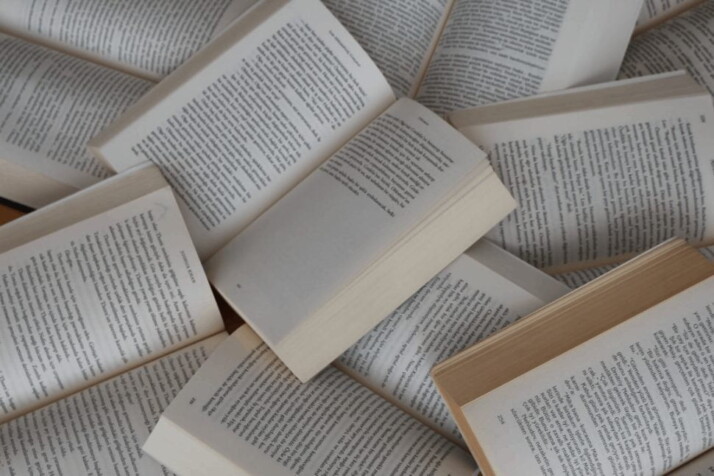Punctuation in novels are writing’s unsung heroes. Is there a valid reason why semicolons, or any punctuation, should not be in a novel?
Most people don’t think about how many commas or quote marks each phrase has when reading a novel. In general, punctuation facilitates reading by smoothing the transition from sentence to paragraph to page. Punctuation should nearly dissolve into the background, allowing the reader to focus on the text.
A fast Google search unearths recommendations from writers, editors, and other writing professionals that semicolons should not appear in fiction.
We recommend using it to make the story more interesting or is a writer’s style. This is because semicolon adds a rhythm to phrases that other punctuations cannot.
Here are some rules for dialogue and common mistakes you should avoid when punctuating in novels.

Dialogue Rules for Punctuation in Novels
Denying oneself the usage of any punctuation mark deprives you of an option that could benefit your sentence, scene, or story. However, there are rules for dialogue that you should pay attention to because they will prevent you from making glaring mistakes.
Here are rules for dialogue in regard to punctuations.
1. Separate the dialogue from the tagline with a comma
For example:
“They would like to party this weekend,” he told her as they climbed the hill.
2. Periods and commas are placed within quote marks.
This pertains to American writing. Unless they directly pertain to the quotations, punctuation marks, should be placed outside of them.
See the examples below:
- “Where’s the money?” he says, and smirks.
Because the question mark in the next example is not part of the information being quoted, it is placed outside the quotation marks.
- Did she say, “We should dress up for church”?
In general, avoid using double punctuation marks and instead use stronger punctuations. Comma and period are weaker than question mark and exclamation point.
3. Taglines interrupting a sentence? Separate by commas
Notice that the second part of the sentence below begins with lowercase letter from this story:
“Yellowleaf”: “That is,” Winston said, “that neither him nor me is his boy.”
4. Use single quotes to indicate a quotation within a quote
Example: “Have you seen ‘The Safari Desert’ yet?” she asked him
5. Italics are fine for internal discourse, as long as they are used consistently.
Example:Does she really love me? he thought.
6. To break up the flow, use a semicolon or a period.
Semicolons and periods can be replaced with commas and a coordinating conjunction if your sentences are too choppy or short.
In addition to commas and coordinating conjunctions, you may also use semicolons to combine a succession of these short phrases. This is a good technique for breaking up a monotonous beat.
Some examples are:
- The girl wanted a doll. She hoped to get one soon. She’d always wanted her own doll. She’d never been bought a doll before.
- The girl wanted a doll and hoped to get one soon. She’d always wanted her own doll; she’d never been bought a doll before.
Obviously, there must be a natural relationship between the two parts of combined sentences for the semicolon to be utilized correctly.
Punctuation in Novels: Common Mistakes
Amateur fiction writers frequently use incorrect dialogue punctuation and formatting. The most common blunder is using quotation marks outside of the spoken word. Only the words spoken by the person should be included within the quote. Here are two other common dialogue blunders to avoid.
Punctuations and Spacing
Because it is part of the dialogue, the exclamation point should be inside the quotation. Check out these examples below:
- Wrong: “She has certainly gone mad”! She said.
- Right: “She has certainly gone mad!” she said.
Two Sentences of Dialogue and Commas
Another common grammatical error is to use a comma instead of a period to separate two sentences in dialogue.
- Wrong: “I am at my wits’ end,” he said stuttering, “I have tried all the combination of the lock.”
- Right: “I am at my wits’ end,” he said, stuttering. “I have tried all the combination of the lock.”
To Wrap Up
Punctuation is for emphasis, clarity, and rhythm. Varying your punctuation marks adds variation to your sentence building, breaks up a repetitive rhythm, and allows you to attract attention to specific terms.
Employ the full variety of possibilities, but learn to accurately and efficiently use grammar and punctuation. Consider your readers and select options that will improve their reading pleasure.
Explore All Punctuation Articles
The Semicolon: Basic Guide to Effective Usage
The semicolon (;) is a punctuation mark. In English, a semicolon typically indicates that two related independent clauses follow without…
Placement of Periods: Before or After Quotations
Punctuation rules used with quotations are sometimes difficult to remember as there are only slight differences. Whether to place punctuation…
Quotation Marks: a Unique Guide of Its Use in Writing
When writing, you have to be watchful of the punctuation marks you used to convey a clear message. One type…
How to List Questions in a Sentence: A Short Guide
You might have encountered writing a sentence filled with a series of questions, but you don’t know to enumerate them.…
English Symbols: A List of Punctuation Marks and Uses
English requires you to have enough knowledge in using basic English Symbols. Alongside an effective conveyance of your main idea,…
Do You Capitalize After an Ellipsis?
The use of ellipsis isn’t common thing regular writers do. You may sometimes ask yourself, do you capitalize after an…
